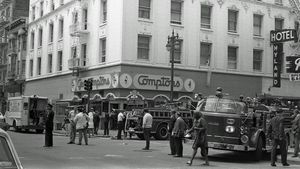Photos: Nikko Lencek-Inagaki
Just west of Tokyo's Asakusa neighborhood one of the city's best-kept foodies secrets waits for intrepid explorers. Sandwiched between Kototoi-dori street on the North and Asakusa-dori street on the South is Kappabashi, Tokyo's restaurant supply district.
Mom-and-pop style shops, crowded with signage, ceramic sake sets, bulk snacks, food-related souvenirs like the ones above, and high end Japanese steel knives (some hand-made) press against each other here for a two or three block radius. If you ever needed a reasonably-priced, restaurant-quality dumpling steamer, miniature deep-frier, or just an elegant new coffee mug, Kappabashi is where they'll be found.
Just southeast of this neighborhod is Chiyoda city, where diplomats' houses encircle the massive, moated private park at Tokyo's heart -- the home of the Imperial Family. Most of this area is closed to the public, but the East Gardens are usually open for an afternoon stroll.
Fully intended for bloody military use, the castle's Tokugawa-era walls erupt alongside delicately landscaped gardens, among which are the Symbolic Prefectural Trees, which are in fact real, rather nice trees.
Photos: Nikko Lencek-Inagaki
Just west of Tokyo's Asakusa neighborhood one of the city's best-kept foodies secrets waits for intrepid explorers. Sandwiched between Kototoi-dori street on the North and Asakusa-dori street on the South is Kappabashi, Tokyo's restaurant supply district.
Mom-and-pop style shops, crowded with signage, ceramic sake sets, bulk snacks, food-related souvenirs like the ones above, and high end Japanese steel knives (some hand-made) press against each other here for a two or three block radius. If you ever needed a reasonably-priced, restaurant-quality dumpling steamer, miniature deep-frier, or just an elegant new coffee mug, Kappabashi is where they'll be found.
Just southeast of this neighborhod is Chiyoda city, where diplomats' houses encircle the massive, moated private park at Tokyo's heart -- the home of the Imperial Family. Most of this area is closed to the public, but the East Gardens are usually open for an afternoon stroll.
Fully intended for bloody military use, the castle's Tokugawa-era walls erupt alongside delicately landscaped gardens, among which are the Symbolic Prefectural Trees, which are in fact real, rather nice trees.













































































